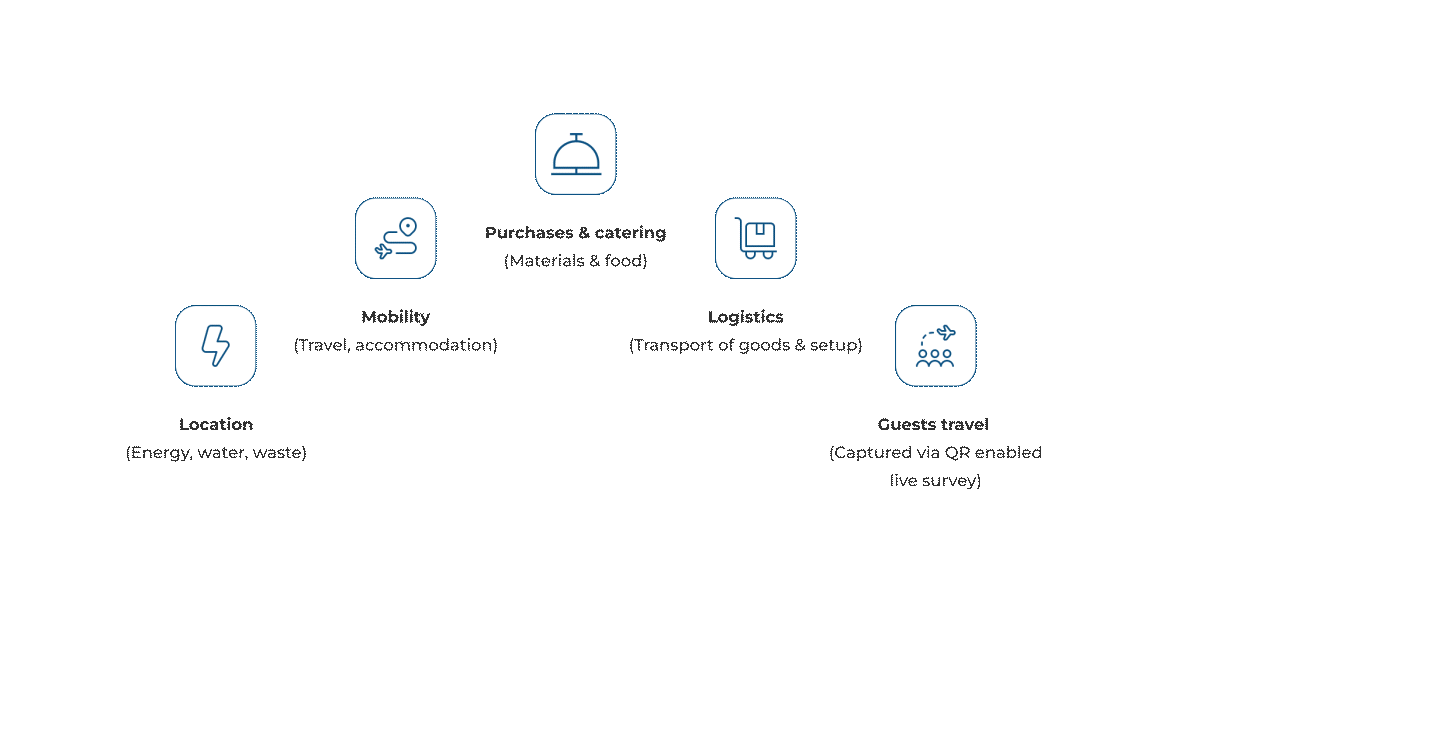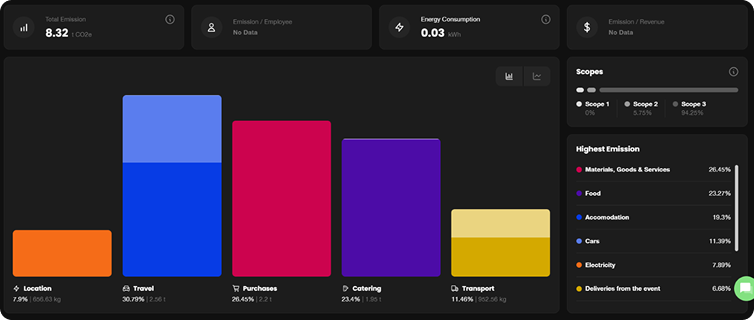1,000kg
CO₂e per attendee
Typical event footprint (range: 500–1,000 kg)
10%
of global emissions
Events rival the U.S. carbon footprint
2.5tonnes
CO₂e per person/year( by 2030)
limit needed to meet Paris 1.5 degree target
$ 1T
industry, growing 11%
Carbon impact rising with scale








